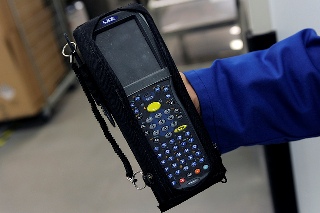 The Asia-Pacific Economic Cooperation pushed for the adoption of compatible data standards to enhance cross-border control and supply chain management, saying promoting seamless data sharing systems will bring many benefits to APEC members.
The Asia-Pacific Economic Cooperation pushed for the adoption of compatible data standards to enhance cross-border control and supply chain management, saying promoting seamless data sharing systems will bring many benefits to APEC members.
“Production networks that span multiple economies are prevalent in our region,” said John Larkin, APEC committee chair on trade and investment. “This makes standardized product identification codes and data infrastructure across multiple economies increasingly important for effective and efficient border management and supply chain performance.”
Global data standards can increase trade facilitation and efficiency of border control, and assist in product traceability in today’s complex supply chains where a product or raw material is sourced from multiple suppliers throughout the region, he said.
For example, if hazardous lead paint is detected in a shipment of wooden toy products, governments can use global data standards to identify the supplier source of the tainted paint and launch a product recall.
“This is accomplished by scanning the bar code on the product or the GTIN number, a global data standard known as the Global Trade Item Number, that contains the product information,” explained Kent Krul from the U.S. Department of Agriculture, who shared best practices from the United States at the recent APEC capacity-building workshop in Qingdao, China, as part of the Second Senior Officials’ Meeting.
“Ideally, one data element encoded in this bar code unlocks where the raw materials came from, who the suppliers were, and where the product was manufactured,” added Krul.
Aside from assisting with safety or counterfeit products, global data standards can also expedite trade for low-risk goods. For example, a product that is repeatedly at low risk can more easily be fast-tracked and released without inspection based on the detailed data provided.
The Hong Kong Intra-Asia Visibility Pilot between China, Hong Kong, and Taiwan is an example of innovative work to begin streamlining data standards for customs management in the region, the APEC said.
“Before a container leaves, Chinese Taipei Customs will inspect it and install a RFID e-seal. The global data standard for product identification is shared with Hong Kong, China customs through uploading to a cloud-based visibility network,” explained Anna Lin, vice-chairman of the sub-committee on infrastructure support, Hong Kong Logistics Development Council.
“Before the container even arrives in Hong Kong, China, the product information allows customs officials to ascertain what, where, when and why from data associated with the product, providing better risk profiling,” added Lin.
This same process and sharing of data occurs as the container moves on from Hong Kong and crosses the border into China. The pilot shows the benefits resulting from the use of global data standards in assisting cross-border supply chain management and the ability to track products from the source to destination in real time.
APEC said it plans to hold a trade policy dialogue in August on ways to promote the adoption and compatibility of global data standards among the association’s member-economies.
Photo: IAEA Imagebank




